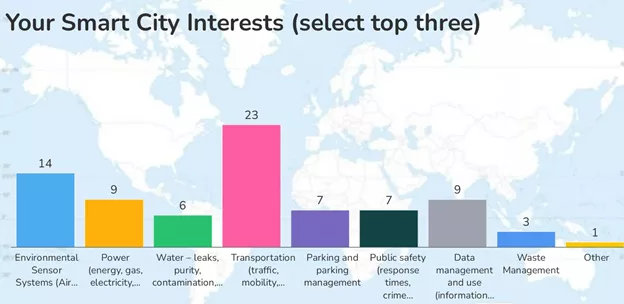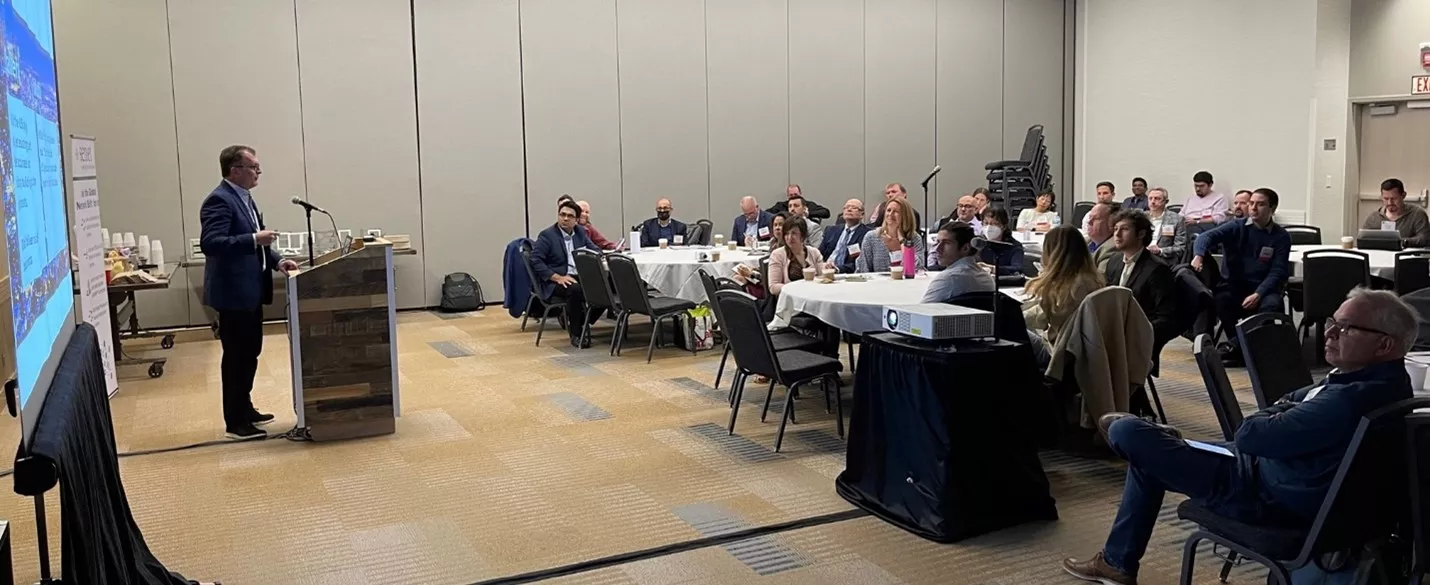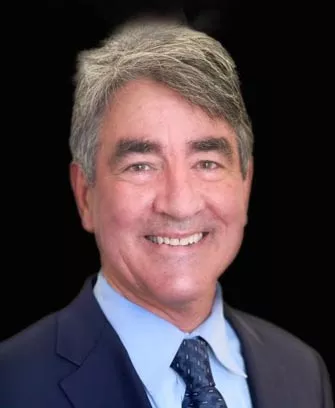
SEMI’s MEMS and Sensors Industry Group (MSIG) is committed to helping its member companies navigate the MEMS and sensors supply chain. A year ago, the MSIG governing council challenged MSIG by asking, “What’s next for sensors?” In response, MSIG launched the Sensor Solutions Partnership Program with Smart Cities as the first topic.
To help build the MEMS and sensors industry’s understanding of the Smart City challenges facing city technical and management personnel (and their integrators), MSIG held an invitation-only Sensorize Your City workshop for sensor device manufacturers and integrators on April 5 in Columbus Ohio.
SEMI member companies Bosch Sensortec, Infineon, PNI Sensor, NXP, STMicroelectronics and TDK sponsored the workshop, the first as part of the MSIG Sensor Solutions Partnership program. The workshop was part of the Smart Cities Connect Conference.

The workshop attracted 60 invite-only attendees, with 25% city representatives, 19% sensors manufacturers, 38% system integrators and 18% others. Attendees were polled on many Smart City issues including transportation and decaying infrastructure (see Figure 1), the biggest challenge they see facing cities in the next five years. Yet the polling also revealed that public safety and traffic management projects are the easiest to fund, and that the U.S. government is the primary source of funding for projects. What’s more, 25% of the city representatives attending the workshop have an annual budget of more than $1 million for new projects while 40% had less, and a third of the cities at the event did not know their Smart Cities budget.

Figure 1: City representatives identified transportation projects as their top area of interest, with environmental sensors number two on their list.
Sensorize Your City Workshop Takeaways
MSIG sensor manufacturing member companies including Bosch, Infineon, PNI Sensor and STMicroelectronics presented their latest sensor advancements. System Integrators, invited to speak by the sensor makers, included Synapse, NextNav (Figure 2), Carrier, Senet and Arduino. The companies provided smart city use case studies and product developments in each of their markets. System integrators are companies that take sensors and make a product that can be sold to the cities, but also include companies that provide wireless connectivity so sensor data can be sent to the cloud.

Figure 2: John Scally of NextNav describes how his pressure sensor network allows determination of which floor someone is located on in a high-rise building during an emergency, not just their map coordinate location.
Key takeaways from open discussion after each segment of the workshop included the following:
- Plug and play offerings are much more attractive for deploying new Smart City systems from sensors to cloud connectivity.
- Cities want sensors to be bundled with systems and software. They will not purchase un-housed sensors.
- Cities want sensors that have a clear value to their residents.
- It is important for city planners to know, and often difficult to determine, the full cost of smart city project.
- More examples of success stories with technical details would be useful in specifying and securing funding for new Smart City projects.
- More than 150 cities, counties and regional economic development organizations learned more about how to leverage digital advancements to transform their cities for economic prosperity and well-being of their residents.
- If a Smart City project reduces the need for manual labor, the cities feel they can redeploy existing personnel to Smart City sensors, gateways, and connectivity projects.
More than 1,500 attendees of the Smart Cities Connect Conference learned about the impact of the infrastructure bill, digital networks, urban operations, smart mobility, infrastructure, and community policies. The program also included a special session on Start Ups for Digital Transformation.
Sensor Street Exhibit
 SEMI MSIG and our sponsors shared a booth, nicknamed Sensor Street, on the exhibition floor to give hands-on demonstrations during the exhibition hours. Traffic was strong and we had many useful conversations ranging from “Who is SEMI?” to “How does this sensor work?” and “How do I get my first Smart City project started?” We also had many discussions about the Smart Cities project market, challenges and ideas for overcoming project technical and bureaucratic issues. The Smart City attendees left with a great impression of SEMI and the capabilities of our sponsors.
SEMI MSIG and our sponsors shared a booth, nicknamed Sensor Street, on the exhibition floor to give hands-on demonstrations during the exhibition hours. Traffic was strong and we had many useful conversations ranging from “Who is SEMI?” to “How does this sensor work?” and “How do I get my first Smart City project started?” We also had many discussions about the Smart Cities project market, challenges and ideas for overcoming project technical and bureaucratic issues. The Smart City attendees left with a great impression of SEMI and the capabilities of our sponsors.
More Smart Cities Opportunities Ahead
The first SEMI MSIG Sensor Solution Partnership foray will not be our last! We plan to continue working on Smart Cities and will return for next year’s conference as one of the main attractions. The event gave us more actionable intelligence to share with members, including those that were not able to attend. Please reach out to Paul Carey at pcarey@semi.org if you want to learn more.
What about Sensors Solutions Partnership program? This success has us thinking that MSIG business development can help member companies. We plan to continue to make connections with new and developing sensor markets! Join SEMI MSIG to get more information on how you can participate.
About the Author
 Paul Carey is director of the SEMI MSIG and oversees the MSIG R&D Program Reviews, Working GroupsMSIG’s, in addition to supporting Member Outreach and events. Paul is an original architect of the Sensor Solutions Partnership program, which enables value-generating connections between sensor suppliers and end users. Since receiving his Ph.D. from Stanford in Material Science and Engineering, and completing a post-doc at Siemens in Munich, Paul has worked at Lawrence Livermore National Laboratory (LLNL), FlexICs, Inc., dpiX, and Applied Materials.
Paul Carey is director of the SEMI MSIG and oversees the MSIG R&D Program Reviews, Working GroupsMSIG’s, in addition to supporting Member Outreach and events. Paul is an original architect of the Sensor Solutions Partnership program, which enables value-generating connections between sensor suppliers and end users. Since receiving his Ph.D. from Stanford in Material Science and Engineering, and completing a post-doc at Siemens in Munich, Paul has worked at Lawrence Livermore National Laboratory (LLNL), FlexICs, Inc., dpiX, and Applied Materials.